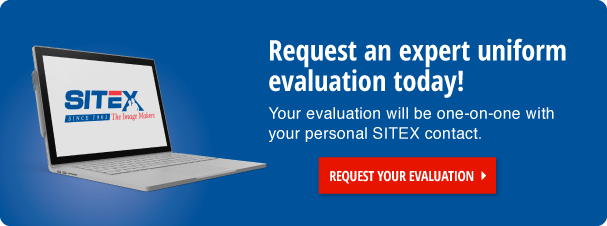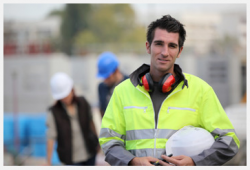
Frequently-Asked Questions about Hi-Vis Workwear
In your business or organization, are there any major hazards that could put your employees or volunteers in danger? And what makes these situations hazards? Think of individuals who are out directing traffic, constructing buildings, working on airport tarmacs, etc.
What makes these jobs hazards is not just that they are dealing with incredibly heavy materials but that if someone doesn’t see them, they can get severely injured and the accident could be fatal.
We’ve created this blog post to detail everything that you need to know when looking for your organization’s hi-vis workwear and visibility enhanced apparel.
1. What exactly is hi-vis workwear and visibility enhanced apparel and are they the same thing?
What makes clothing hi-vis is the color of the material – it needs to be in a fluorescent color (think of a neon highlighter) such as yellow-green. In hi-vis clothing, this fluorescent color makes up almost the entirety of the clothing material. Whereas, in visibility enhanced apparel, this fluorescent color only appears on a reflective strip on the clothing.
Aside from the visual differences between the two, how do you know which one is right for your business or organization? Well it depends where you fall under the ANSI 107 law.
2. What is the ANSI/ISEA 107 and what does it mean to be ANSI-compliant?
ANSI/ISEA stands for the American National Standards Institute and the International Safety Equipment Association. This specific law, regarding hi-vis workwear, provides guidelines for the design of the hi-vis workwear, what three fluorescent colors are permitted (yellow-green, orange-red and red), three classes of garments (O, P, and R), and more regarding where the reflective material should be placed on the clothing and performance measurements.
What is incredibly important here to know is what garments to use for different fields of work. The garment classes are based on the different type of work and hazard that work imposes. Type O garments involve positions where employees are exposed to off-road equipment and vehicles (including construction, utilities, manufacturing, etc.). Type P garments are specific to EMS, fire, police and similar public emergency positions due to the specific potential hazards their positions involve. Type R garments involve positions where employees are working directly in traffic and on the roadway.
3. How does this apply to your employees?
Without the proper hi-vis workwear and visibility enhanced apparel, your employees are at great risk of getting injured from not being properly seen. Different visibility materials exist for different fields, dependent on what will be the most protective for the individual in that situation.
At SITEX, we provide uniform rental programs, which include the different types of hi-vis workwear and visibility enhanced apparel your employees may need. Our garments include fluorescent safety yellow shirts and vests, overalls, industrial pants and perma-lined jackets with reflective strips and even flame-resistant garments.
If you’re looking for a simple-to-use rental program to help protect your employees and need some help selecting your materials, contact us today at 270-631-2231 and we’ll walk you through the quick and easy process!



